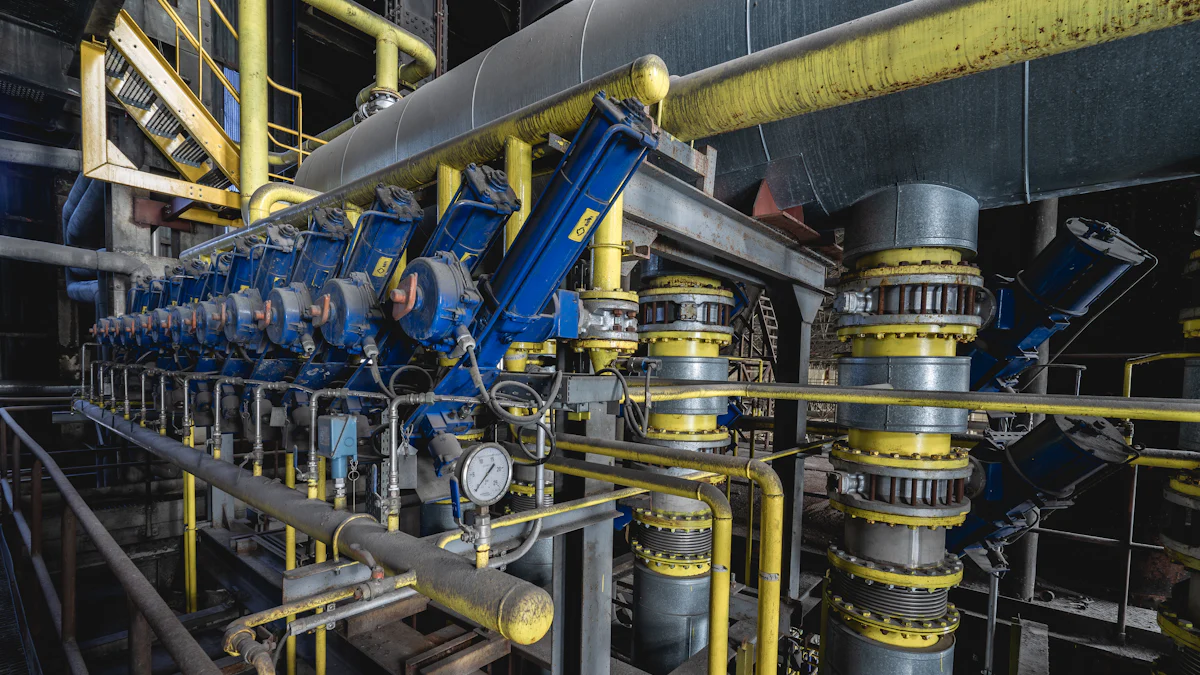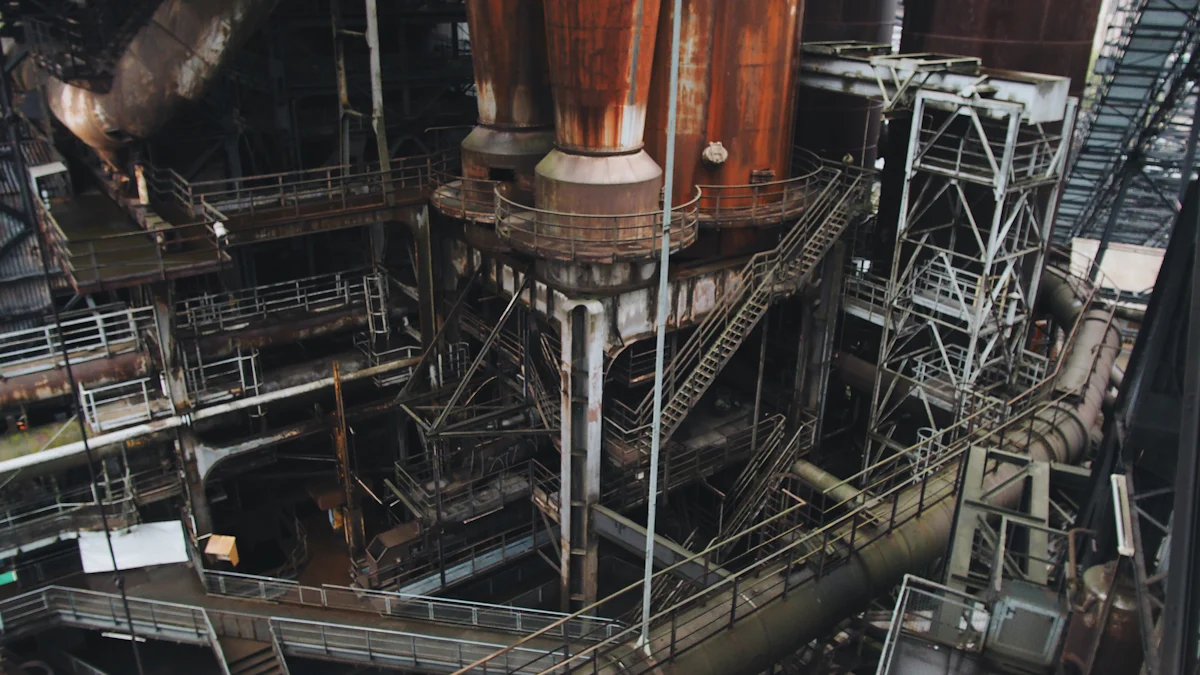
News

Induction heating revolutionizes modern manufacturing by providing a rapid and efficient method to heat conductive materials. With precise temperature control and energy savings, it can be up to 50% more efficient than traditional methods. High-frequency quenching, a crucial application of induction heating, significantly enhances surface hardness and material properties. This technology minimizes heat loss and reduces carbon emissions, supporting sustainable practices. The High Frequency Induction Annealing Machine and Portable IGBT Induction Annealing Machine exemplify the versatility and efficiency of induction heat treatment equipment across various industries.
Understanding Induction Heating
Induction heating stands as a cornerstone in modern manufacturing, offering a precise and efficient method to heat conductive materials. This technology relies on the principles of electromagnetic induction, which you can explore further below.
Principles of Induction Heating
Electromagnetic Induction
Electromagnetic induction forms the backbone of induction heating. When you pass an alternating current through a coil, it generates a magnetic field. This field induces eddy currents in any conductive material placed within it. These currents flow through the material, generating heat due to the material's resistance. This process allows for rapid and localized heating, making it ideal for applications like high-frequency quenching.
Heat Generation in Conductive Materials
The heat generation in conductive materials occurs internally, thanks to the eddy currents. As these currents circulate within the material, they produce heat through joule heating. This method ensures that the heat is generated precisely where needed, minimizing energy loss and enhancing efficiency. You can achieve uniform heating without direct contact, which is a significant advantage over traditional methods.
Equipment Used in Induction Heating
To harness the power of induction heating, you need specific equipment designed for this purpose. The two primary components are induction coils and power supply units.
Induction Coils
Induction coils are essential for creating the magnetic field necessary for induction heating. These coils come in various shapes and sizes, tailored to the specific application. When you use an induction coil, it surrounds the workpiece, ensuring that the magnetic field penetrates the material evenly. This setup allows for precise control over the heating process, crucial for achieving desired material properties.
Power Supply Units
Power supply units provide the alternating current required for induction heating. These units must deliver high-frequency currents to generate the necessary magnetic field. The power supply's efficiency and reliability directly impact the heating process's success. You can adjust the frequency and power output to suit different materials and applications, ensuring optimal results.
By understanding these principles and equipment, you can appreciate how induction heating revolutionizes processes like high-frequency quenching. This technology not only enhances efficiency but also supports sustainable practices by reducing energy consumption and emissions.
The Process of High Frequency Quenching
High-frequency quenching plays a pivotal role in enhancing the durability and performance of metal components. This process involves several critical steps that ensure the desired material properties are achieved.
Steps Involved in High Frequency Quenching
Rapid Heating: You begin the high-frequency quenching process by rapidly heating the metal component. Induction heating technology makes this possible. It uses electromagnetic induction to generate heat within the metal. This method allows you to target specific areas without direct contact, ensuring uniform heating. During World War II, this technology advanced significantly to harden metal engine parts efficiently.
Controlled Cooling: After heating, you must cool the metal quickly. This rapid cooling, or quenching, transforms the metal's surface structure. It creates a martensitic or ferritic-martensitic layer, which enhances hardness and wear resistance. The controlled cooling process is crucial for achieving the desired mechanical properties.
Role of Induction Heating in Quenching
Induction heating is integral to the quenching process, offering several advantages that improve the quality and efficiency of metal treatment.
Achieving Desired Material Properties: By using induction heating, you can precisely control the temperature and heating duration. This precision ensures that the metal achieves the desired hardness and strength. The dual-frequency method, which combines medium and high frequencies, further enhances the hardening process, especially for gears.
Enhancing Surface Hardness: Induction heating allows you to focus the heat on the metal's surface. This targeted approach results in a hardened outer layer while maintaining a softer core. Such a structure provides excellent wear resistance and toughness, making it ideal for components subjected to high stress.
High-frequency quenching, powered by induction heating, revolutionizes the way you enhance metal properties. This process not only improves efficiency but also supports sustainable manufacturing practices by reducing energy consumption.
Benefits of Induction Heating in High Frequency Quenching
Efficiency and Precision
Induction heating offers remarkable efficiency and precision, making it a preferred choice for high-frequency quenching.
Energy Efficiency
You can achieve up to 50% more energy efficiency with induction heating compared to traditional methods. This technology uses less power to heat the same amount of material, resulting in significant energy savings. The rapid and localized heating minimizes heat loss, ensuring that energy is used effectively. By adopting induction heating, you contribute to a more sustainable manufacturing process.
Precision in Temperature Control
Induction heating provides precise temperature control, which is crucial for high-frequency quenching. You can target specific areas of a workpiece without affecting the entire component. This precision ensures that the desired material properties are achieved consistently. The ability to control temperature accurately enhances the quality of the quenching process, leading to superior product performance.
Environmental and Economic Advantages
The environmental and economic benefits of induction heating in high-frequency quenching are substantial.
Reduced Energy Consumption
By using induction heating, you significantly reduce energy consumption. This method generates heat directly within the material, eliminating the need for external heating sources. The reduction in energy usage not only lowers your carbon footprint but also supports global efforts towards sustainability. You play a part in conserving resources and protecting the environment.
Lower Operational Costs
Induction heating leads to lower operational costs. The efficiency of this technology reduces energy bills, and the precision in heating minimizes material waste. You benefit from faster production times and improved system efficiency. These advantages translate into cost savings, making induction heating an economically viable option for modern manufacturing.
By embracing induction heating for high-frequency quenching, you enhance both efficiency and sustainability. This approach not only improves the quality of your products but also supports environmentally friendly practices.
Practical Applications in Various Industries

Image Source: unsplash
Induction heating has transformed various industries by offering efficient and precise solutions for metal treatment. High-frequency quenching, a key application of induction heating, plays a vital role in enhancing the performance and durability of components across different sectors.
Automotive Industry
The automotive industry heavily relies on induction heating for manufacturing high-quality components. This technology ensures efficient production processes and superior part performance.
Hardening of Engine Components
In the automotive sector, you use induction heating to harden engine components. This process involves rapidly heating specific areas of the engine parts, such as crankshafts and camshafts, followed by quenching. The result is a hardened surface that withstands wear and tear, ensuring the engine's longevity and reliability. Induction heating provides uniform heating profiles, which are crucial for achieving consistent hardness across the component.
Treatment of Transmission Parts
Transmission parts also benefit from high-frequency quenching. You can treat gears and shafts using induction heating to enhance their surface hardness and fatigue resistance. This treatment improves the transmission system's efficiency and durability, leading to smoother vehicle operation. The precision of induction heating allows you to target specific areas, ensuring optimal performance of each component.
Aerospace Industry
The aerospace industry demands materials and components that can withstand extreme conditions. Induction heating offers solutions that meet these stringent requirements.
Strengthening of Aircraft Components
You can use induction heating to strengthen aircraft components, such as landing gear and turbine blades. This process involves heating the metal parts to a specific temperature and then quenching them to achieve the desired mechanical properties. The result is a robust component that can endure high stress and temperature variations. Induction heating's ability to provide rapid and localized heating makes it ideal for treating critical aerospace parts.
Durability Enhancement in Aerospace Materials
Induction heating enhances the durability of aerospace materials by improving their surface properties. You can apply this technology to treat materials like titanium and aluminum alloys, which are commonly used in aircraft construction. The process increases the materials' resistance to wear and corrosion, ensuring the aircraft's safety and performance. By using induction heating, you contribute to the development of more reliable and efficient aerospace systems.
Induction heating, through high-frequency quenching, revolutionizes the automotive and aerospace industries. This technology not only enhances component performance but also supports sustainable manufacturing practices by reducing energy consumption and waste.
In this blog, you explored the transformative role of induction heating in high-frequency quenching. This technology offers precise temperature control, rapid heating rates, and energy efficiency, which significantly enhance product quality and process efficiency. Induction heating stands out as a clean technological innovation, saving energy and boosting productivity. Its applications span various industries, ensuring the performance and longevity of components. As you look to the future, the potential for advancements in induction heating technology remains vast, promising even greater efficiency and sustainability in modern manufacturing.
Please give us a message